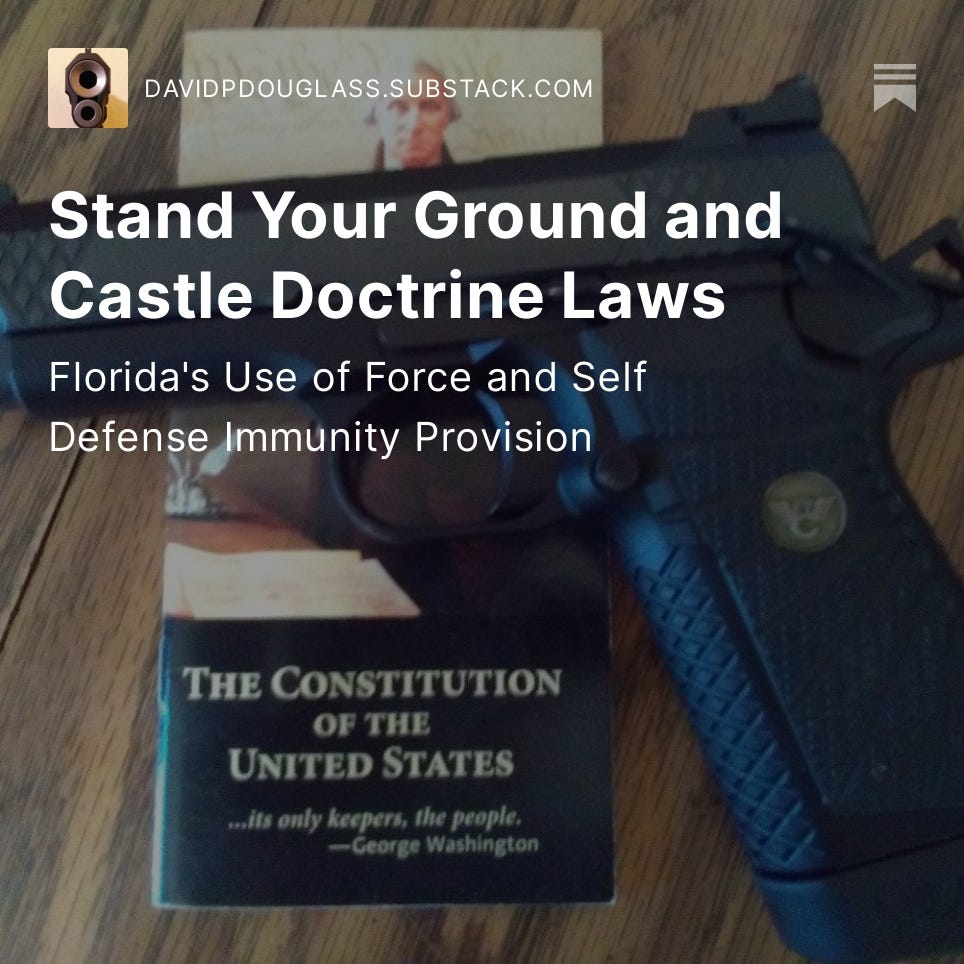Stand Your Ground and Castle Doctrine Laws
Florida's Use of Force and Self Defense Immunity Provision
Keep reading with a 7-day free trial
Subscribe to Florida Gun & Self-Defense to keep reading this post and get 7 days of free access to the full post archives.



